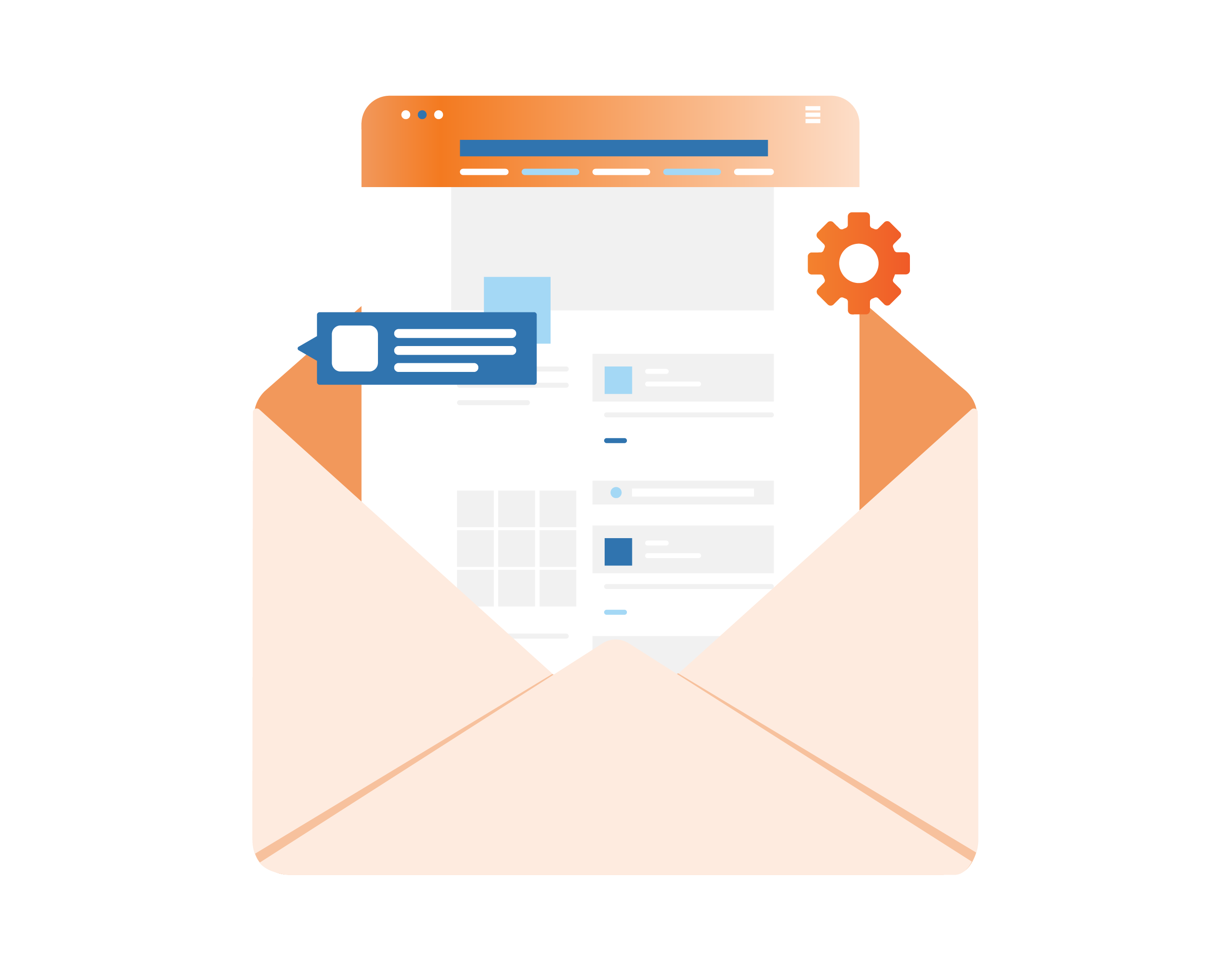Automating emails from Excel is not only possible but can significantly enhance your productivity. With tools like Office 365 and Excel’s VBA capabilities, you can streamline your emailing process, sending automatic emails directly from your spreadsheets. This means fewer manual entries and more time to focus on critical tasks.
At Completing, we specialize in Project Management Systems Automation & Integration, providing you with the streamlined workflows and tools necessary for effective email automation. Our solutions help simplify work routines, freeing up valuable time and eliminating the frustrating complexities that can hinder your team’s performance.
Whether you need to send reminders or updates, mastering email automation in Excel can save you time and improve communication efficiency. Embrace the power of automation and transform the way you manage your tasks with Completing.
Understanding Email Automation in Excel
Email automation in Excel allows you to streamline communication, integrate data, and enhance productivity without significant manual effort. By leveraging tools like VBA, Excel Tables, and dynamic content, you can efficiently create automated email workflows tailored to your needs.
The Role of VBA in Automation
Visual Basic for Applications (VBA) plays a crucial role in automating email tasks in Excel. VBA allows you to write scripts that perform complex actions such as sending emails directly from your spreadsheet.
To start, access the VBA Editor by pressing Alt + F11. Here, you can create a new module and write your email automation script. A basic script can include commands to open Outlook, draft an email, and send it to multiple recipients. Utilizing VBA reduces the time spent on repetitive emailing tasks, ensuring quicker communication.
Utilizing Excel Tables and Ranges
Excel Tables and ranges are essential when managing your data for email automation. They allow you to structure your recipients and email content efficiently. By converting your data range into an Excel Table, each entry is easier to reference in your VBA script.
For instance, a table might include columns for Recipient Name, Email Address, and Message Content. This structured approach enables you to pull dynamic information directly into your emails, ensuring each message is personalized. Organizing your data correctly improves your ability to create email templates that adapt to the content of your table.
Dynamic Content and Fields
Incorporating dynamic content into your emails enhances engagement and relevance. This involves using placeholders within your email templates, which are filled with specific data when the email is generated.
For example, you might set up an email to include the recipient’s name and relevant project details. Your VBA script can automate this by pulling data from your Excel Table, ensuring each email addresses the recipient personally and presents pertinent information. The result is a more tailored communication approach that resonates better with your audience.
Using tools like those from Completing streamlines workflows by integrating project management systems with automated email processes. This approach eliminates fragmented tasks and frees up time for more valuable work, ultimately boosting your team’s efficiency.
Setting Up Automated Emails
Automating emails from Excel can significantly enhance your productivity. To set this up effectively, you need to focus on composing your email templates, configuring email settings, and defining the trigger conditions.
Composing Email Templates
Start by designing clear and concise email templates within Excel. Use cells to organize different parts of the email, such as the subject line, body content, and email recipient addresses.
A simple structure could look like this:
| Subject | Recipient | Body |
|---|---|---|
| Monthly Update | [email protected] | Hello Team, Here’s the update… |
| Project Reminder | [email protected] | Just a reminder about our upcoming meeting. |
Utilize conditional formatting to highlight rows based on specific criteria, making it easier to spot important emails at a glance. This feature helps ensure you don’t overlook any important recipients or subjects.
Configuring Email Settings
Once your email templates are ready, you must set up the email configuration. This involves enabling the Developer tab in Excel if it’s not already visible. This tab allows you to access the VBA editor, where you can write the necessary macros for automation.
In the VBA editor, you will define how Excel interacts with Outlook. A basic script can specify the subject line, recipient, and body content from the selected cells in your spreadsheet. Ensure that you maintain security settings that allow programmatic sending of emails, which is crucial for functionality.
Defining the Trigger Conditions
The final step is to establish the conditions that will trigger your automated emails. You must choose the specific criteria that will determine when an email should be sent. This can be based on dates, changes in project status, or any other relevant data you have in your spreadsheet.
For instance, you could set a trigger for when a project reaches a particular milestone or a due date approaches. By defining these conditions accurately, you streamline workflows and ensure timely communication. Completing provides the best solutions for Project Management Systems Automation, deploying streamlined tools to simplify processes and free up time for your team.
Connecting Excel with Outlook and Office 365
Integrating Excel with Outlook and Office 365 allows you to streamline email communications by automating tasks. You can efficiently send emails directly from Excel, leveraging both built-in features and powerful automation tools to enhance productivity.
Using Office 365 Outlook Features
Office 365 Outlook provides robust tools for sending emails directly from Excel. By utilizing simple VBA macros, you can automate the process. You can set up a macro that triggers email functionality tied to specific conditions in your spreadsheet.
For instance, when a value is updated or when deadlines approach, the macro can send alerts. To implement this, you need to navigate to the Developer tab in Excel and write a macro that includes your email logic. Familiarize yourself with Outlook’s email format requirements to ensure successful delivery.
Employing Connectors and Power Automate
You can enhance your email automation by using Power Automate and its available connectors. This tool integrates seamlessly with both Excel and Office 365 Outlook. Create “My Flows” that define actions based on triggers, allowing you to send emails automatically based on data in your Excel sheets.
For example, you might set a flow to send an email when a new entry is added or when specific values change. Navigate to Power Automate, select the Excel connector, and configure your flow with the conditions for sending emails. Completing offers expertise in streamlining these processes, ensuring efficient automation that allows your team to focus on their core work without disruptions.
Advanced Email Automation Techniques
Automating emails from Excel can enhance efficiency and improve communication. You can incorporate dynamic hyperlinks, automate notifications based on dataset changes, and track email open rates to optimize your email marketing efforts.
Incorporating Dynamic Hyperlinks
Using the hyperlink function in Excel, you can create dynamic links that adjust based on the data context. For example, if your dataset contains URLs or email addresses, you can automate a mailto link for quick email composition.
In your Excel sheet, use the formula:
=HYPERLINK("mailto:"&A1&"?subject=Subject%20Text", "Send Email")
This allows users to click and send an email directly to the address in cell A1.
This makes email automation user-friendly and reduces the steps needed to initiate contact. Incorporating dynamic fields keeps your communication personalized and relevant.
Automating Based on Dataset Changes
Excel can automatically track changes in your dataset and send notifications accordingly. By using tools like Power Automate, you can set triggers based on specific updates in your spreadsheet.
For example, create a flow that sends an email when a new entry is added. Choose the appropriate trigger, such as “When a new row is added,” and configure an action to send an email via Office 365 Outlook.
This approach enables timely notifications and keeps your team informed. By using an efficient method like this, you can ensure that important updates do not get overlooked.
Tracking Email Open Rates
To evaluate the effectiveness of your email campaigns, it’s crucial to track open rates. This can be done with specialized email marketing tools that provide analytics to gauge engagement levels.
You can include a tracking pixel in your emails, which sends information back to your server when opened. Alternatively, consider using link tracking for any hyperlinks included in your message to see how many recipients are engaging with your content.
With these tracking methods, you can adjust your strategies based on recipient behavior. Completing simplifies Project Management Systems Automation & Integration, offering you the tools needed to streamline these processes and improve your communication strategy.
Best Practices for Email Automation
Effective email automation requires careful planning to ensure successful communication. It is vital to manage the volume of emails efficiently, adhere to relevant regulations, and maintain high standards of quality in your messaging.
Managing Large Volumes of Emails
When automating emails, especially with Microsoft 365, consider setting clear deadlines for sending communications. Organize your email list into segments based on recipient behavior or preferences. This allows tailored messaging that resonates with each group, reducing the risk of overwhelming your audience.
Use tools that help track email open rates and responses, which can inform future campaigns. Implement automation rules to manage responses and follow-ups effectively. Additionally, avoid sending too many emails at once by pacing your outreach. This can help maintain engagement and prevent your messages from being marked as spam.
Adhering to Email Marketing Regulations
Compliance with email marketing regulations is crucial for maintaining your brand’s integrity. Familiarize yourself with guidelines such as the CAN-SPAM Act or GDPR, which set rules for automated emails. Always include clear unsubscribe options in your messages to respect user preferences.
Ensure your email subject lines are honest and reflect the content of the email accurately. Misleading subjects can lead to low trust and increased unsubscribe rates. Keep in mind that your email marketing efforts can enhance your reputation if you follow regulations properly.
Ensuring Quality and Relevance
Quality should never be compromised in your automated emails. Each email should provide value to the recipient. Personalize your content based on user data and preferences to maintain relevance.
Regularly update your email templates to keep your messaging fresh and engaging. A/B testing different email formats and subject lines can also help identify what resonates best with your audience.
Completing offers tailored solutions for Project Management Systems Automation & Integration, helping you streamline workflows and eliminate complexity. Using effective automation strategies ensures your emails are not only timely but also impactful, freeing up your time to focus on other important tasks.

